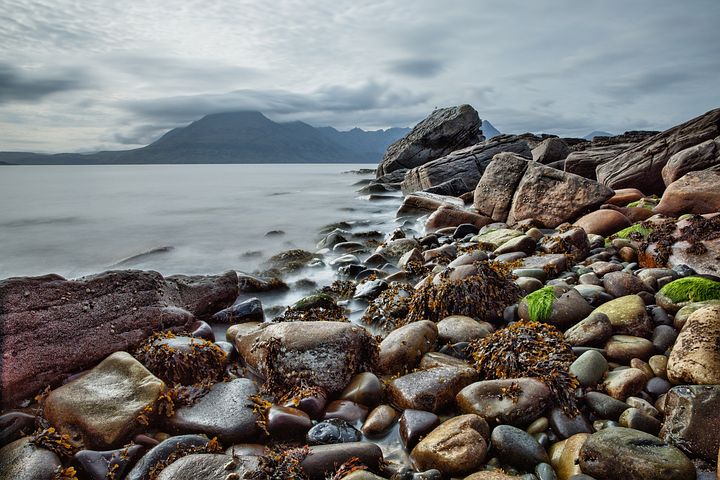Boasting complexity in taste and texture, edible seaweed is a superfood which has been eaten for many, many years.
Vegetables from the garden are part of everyday diets, but the ocean also has its share of edible offerings. Just like their terrestrial counterparts, many types of seaweed are healthy, low-calorie food sources. Most often associated with Japanese cuisine, marine algae have been harvested for thousands of years for culinary and medicinal purposes in China, Korea, and other countries with significant coastlines. Seaweed is now a regular ingredient in smoothies and dried seaweed snacks are a popular alternative to chips.
Edible seaweed has excellent nutritional properties and takes the traditional palate to new dimensions. Many chefs believe that seaweed is an upcoming culinary trend in Australia and that it has many uses beyond the nori sheets used to wrap sushi.
What Is Edible Seaweed?
Edible seaweed, also called sea vegetables, are aquatic plants known as algae (either red algae, green algae, or brown algae) that grow in the ocean. Seaweed contains amino acids called glutamates which have a salty, rich savory taste. Seaweed is a popular ingredient in Asian cuisine, especially Japanese food.
Seaweed offers that real intense MSG sort of flavour. It’s high in glutamate, so you get that umami taste coming through, particularly with the stronger ones like the larger kelps and kombu.
It’s believed there are around 20,000 seaweed species, half of which are edible. It’s said that Australia is home to many hundreds of them.
Seaweed can be found in oceans and marine environments around the world. While some seaweed is harvested directly from its natural environs, seaweed farming produces much of the world’s aquatic crops today.
Some farmers use saltwater tanks to grow seaweed. Most others have the equivalent of garden plots out at sea. These farmers cultivate seaweed on ropes to closely monitor the growth and promote a healthy harvest by removing any undesirable plants or marine lifeAs an edible ingredient, seaweed is often called a superfood.
In terms of health benefits, it is packed with minerals and antioxidants, as well as vitamins A, C, E, and B12
7 Popular Types of Edible Seaweed
Soft and pliable in the water, seaweed is most often dried for preservation, requiring most to be rehydrated in liquid, like water or broth, before eating. Here are some of the most popular types of seaweed used in cooking.
- Wakame. While best known for providing a habitat for a variety of marine life species in the shallow, coastal waters around the world, kelp (laminaria) forests also provide an edible seaweed species known as wakame. Wakame, also known as sea mustard, is a dark green seaweed most often found in miso soup. It has a sweet taste, a silky smooth texture, and is a good source of omega-3 fatty acids.
- Kombu. Kombu is also a type of kelp and one of the most popular edible seaweeds in East Asia. Hokkaido, the largest island in Japan, is one of the largest producers of kombu, but it also plentiful along the California coast. Cooked in water with bonito (skipjack tuna) flakes, kombu is the main ingredient of dashi, the soup stock that is the foundation of many Japanese dishes, like miso soup and ramen. Kombu is also enjoyed on its own, softened in hot water and served with mirin (Japanese rice wine) and soy sauce. Kombu is also steeped in water to make a Japanese tea known as kombucha, which is different from the fermented drink popular in the U.S.
- Nori. Nori, also sometimes known as purple laver, is a deep purplish-red seaweed that turns a dark green when dried. It is roasted and pressed into dried nori sheets, similar to the paper-making process. It is the most well-known type of seaweed in the western world: Japanese restaurants use nori to wrap sushi rolls and onigiri (rice balls). While some seaweeds need to be reconstituted in water, nori sheets are used dry. Aonori is the powdered form, used as a condiment for flavoring traditional Japanese dishes like okonomiyaki (pancakes) and yakisoba (buckwheat noodles).
- Dulse. Dulse is a reddish seaweed from the colder waters of the northern Atlantic and northern Pacific oceans where it grows attached to rocks. First harvested in Scotland and Iceland over a thousand years ago, dulse has a soft, leathery texture. It has a taste reminiscent of bacon and can also be cooked up in oil until crispy, making it a popular bar snack in Canada. Sold in dry flakes, shredded, or ground into a powder, dulse has a wide array of culinary uses. It is used in soups, baked into chips, even used as a meat seasoning. The Irish use dulse to make their famous soda bread.
- Hijiki. Hijiki is a brown seaweed that turns black when dried and looks like little, thin twigs. It is taken from the rocky shorelines of China, Japan, and Korea. Hijiki is first boiled then dried after it is harvested from the ocean. It is often cooked in stir-fries or served with fish.
- Irish moss. Irish moss is a purple and red alga native to the Atlantic shorelines of the U.S. and Europe. Irish moss resembles miniature trees, with branches fanning out from the stem. Irish moss can be found in desserts like tapioca and ice cream because of its quantity of carrageen—sugar molecules (polysaccharides) that are used as thickening agents.
- Sea lettuce. From the genus ulva, this edible blue-green algae is primarily found along coastlines. Also called green nori.


